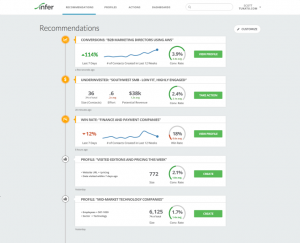Audit your marketing automation program so everybody on your team is aware of changes, updates and what to troubleshoot.
Marketing automation programs (MAPs) help marketers speed up processes and increase efficiency. They get updated frequently, so it’s important to audit them on a regular basis. Here are some tips for how to do this even as your marketing automation program continues to grow.
Map out the marketing automation program
First, map out all the parts of the MAP visually. This should be in a chart that any stakeholder can access when needed.
“I always tell my clients the best place to start your marketing automation program is on a whiteboard or on a Lucidchart so all the members of your team know what’s going on,” said Ali Schwanke, founder of consultancy Simple Strat, in a presentation at The MarTech Conference. “I build a lot of automation and, I’ll tell you, in my head it’s pretty clear. But when I actually try to describe it, if I don’t have a diagram, someone on the outside can’t see what I’m seeing in my brain and it becomes really messy really fast.”
Visualizing the MAP lets team members follow the flow of automated messages at each step in the program.
“This makes it easier for the whole team to spot opportunities to customize and strengthen the message,” Schwanke said. “It also makes it easier to find out what new features impact your ability to execute on your platform.”
Because this system is always evolving, the team should review and revise this map on a regular basis — once or twice per year.
Audit the branding across your templates
As the MAP evolves, so will the company’s branding. Look at existing templates and make sure old messages and visual assets are updated.
“It’s not that it’s off-brand, it’s just not all consistent,” said Schwanke. “Audit all the templates, landing pages, emails, text messages and ads to ensure compliance.”
It’s also helpful to have a checklist or audit template for ongoing use as the marketing automation program continues to grow.
Test all the conversion paths
Conversion paths include any point in the customer experience where customers get triggered to take an action — like registering for content, signing up for a newsletter or setting up a meeting. As part of the marketing automation audit, you need to test all of these conversion paths.
“We’ve seen it where landing pages got updated, the URL was changed, but the page wasn’t redirected,” Schwanke said.
In other cases, a team member has moved onto another job, but this person’s email is still in the program for customers to contact. Testing — annually or quarterly — helps discover where conversions get lost and what parts of the program need to be updated.
Update the map with new features
Going back to the visualization or map of your program, add new features that are expected to be added to your software by the vendor.
“This helps you understand what new things are coming down the pike from a functionality standpoint inside your tech platforms, whether that’s Salesforce or Marketo, or you’re using HubSpot or any of those programs,” said Schwanke.
This part of the audit should include what platforms are testing as beta features, and what features could potentially impact your business’s marketing automation workflow.
“Knowing how [new features] are being put into practice is really important in getting the most out of your automation,” Schwanke said.
The post 4 tips for auditing your marketing automation program appeared first on MarTech.
MarTech(4)
Report Post






